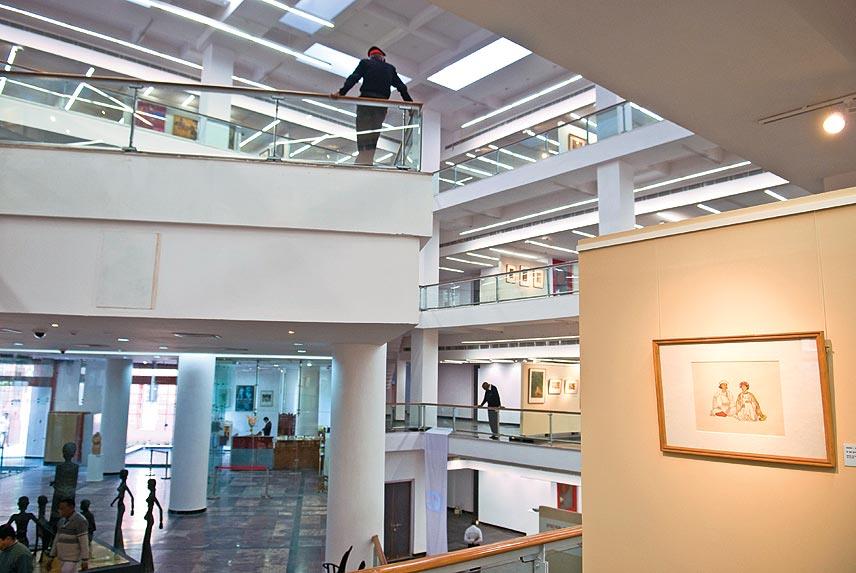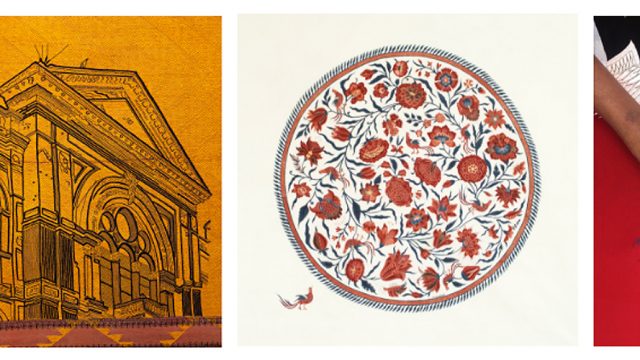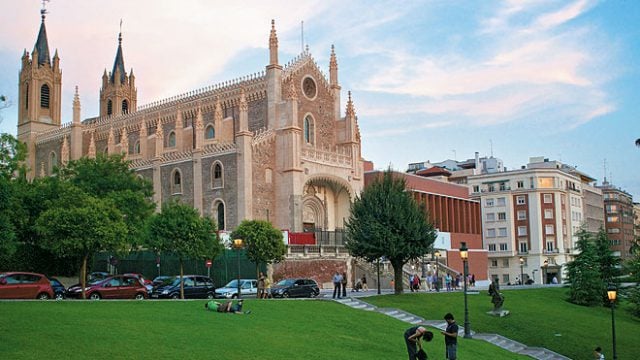Where’s the culture in Delhi? Since last month at least, the official answer has been
If there’s a joke that captures the self-image of modern Dilliwalas, it’s that the only culture we have is agriculture. This line has flown at every community that has made a major landing here: the Punjabis say it about the Punjabis, everyone says it about the Jats. The Punjabis and Jats now say it about the Biharis. Dilli, with its once-famously fertile culture, now has fertiliser culture, which might just explain why our boldest public art is a field of towering steel bulbs titled ‘Sprouts’, near the AIIMS flyover.
It is true that this city’s belle epoque ended a long time ago. Every other Indian metropolis has a native cultural industry to polish its reality—filmmaking, Carnatic sangeet, Tagore. History has scorched Delhi’s genteel Islamic culture out of the city, with the graceful exception of qawwali (largely created by a 13th-century Dilliwala, Amir Khusrau). A late-winter highlight is the Jahan-e-Khusrau festival (www.jahan-e-khusrau.org), which brings great singers in the Sufi tradition to perform at Humayun’s Tomb. (Of course, no festival scales to the sublime like the voice of a single qawwal on a quiet afternoon, as you’ll hear at many near-forgotten dargahs, including the dargah Chirag-e-Dilli). That apart, the hard fate of Islamic Delhi since 1857 has left this city with a lot of space, a lot of fertiliser, but not a lot of roots.
Yet this is the capital of India and having it lie fallow was never a national option. In the Nehruvian decades, great big boxes full of culture were set down around central Delhi. They established a curious pattern — Mandi House Chowk, still the heart of performing arts in Delhi, was built over an expanse of Sultanate tombs (this year, renovations at Rabindra Bhavan stamped out a last unexcavated ruin). The namesake palace of the princely state of Mandi was demolished in the ’70s, to build the far more demolition-worthy Doordarshan Bhavan. We kept this up in the ’80s, building major auditoria and sports complex inside the walls of Siri Fort, the third historic city of Delhi.
The big-box institutions at Mandi House have had their fertile periods, and even today any city would be lucky to have them. The Bharat Rang Mahotsav (www.nsdtheatrefest.com), the annual festival of the National School of Drama, is the best-endowed theatre event of the year; it has managed to host productions like Satoshi Miyagi’s Othello and Medea, surely among the finest visions staged anywhere in the world this decade. In Delhi’s cultural season, from October to March, the many auditoria at Mandi House are constantly busy — recently, the NSD festival squeezed itself in between an annual festival dedicated to Ibsen (www.delhibsenfestival.com) and a wonderful festival of puppetry (www.isharapuppet.com).
The awful Siri Fort auditoria redeem themselves earlier in the year, when they host Cinefan (www.cinefan.osians.com)—a rich festival of Asian and Arab film, which caps Delhi’s post-summer spate of film festivals (this month, keep tabs on the Public Sector Broadcasting Trust’s line-up of documentaries, www.psbt.org). For 10 days, Cinefan also creates a lively, inclusive social whirpool, easy for any visitor to slip into.
Some of the Mandi House boxes are a pleasure even outside of festival season. Dancers’ anklets are constantly chhan-ing at the Shriram Bharatiya Kala Kendra (011-23387132, www.thekendra.com), culminating in their spectacular Ramlila, and the assemblage of art galleries, bookshop and a homely café make the Triveni Kala Sangam (23718833) one of Delhi’s most inviting public spaces. Yet these big-box institutions have been here for decades, and haven’t made Delhi feel like a city of culture. Consider the basic function of a box: holding things safely inside.
From one angle, the heirs of Nehru’s big boxes are the big boxes of the current prime minister, Manmohan Singh (who is, did you know, also our Minister of Culture? And by birth an agriculturalist.).
Culture is the new competitive advantage for shopping malls, a development that is both very alarming and kind of cool. Take the Mocha Arthouse (www.mochaarthouse.com) in DLF Promenade. Double-branded with a builder behemoth and a chain coffee-shop, the Arthouse is a radical little unit: it exhibits digital and contemporary art, and holds festivals that are clever mash-ups of electronica, live music, film and the visual arts (TechnoDrome, their biggest event to date, closes this month).
Although it is in a mall—and you have to figure out for yourself how to feel about that—the Arthouse is an example of what’s seeding a true cultural life here. In one decade, new outposts of art and performance have popped up in the actual galis (as opposed to gullies) of Delhi. The Khoj Studio (65655874, www.khojworkshop.org), down a gali in the urban village of Hauz Rani, just turned 10, but it’s identified with gutsy contemporary art in the country; in fact, if Khoj’s annual performance-art week showed any more guts, it would have a hernia.
Dilliwalas can now drop in on a reading at a bookshop that exclusively stocks independent publishing (Yodakin in Hauz Khas Village; 41787201, www.yodakin.com). Nearby, the Living Room Café (46080533, www.tlrcafe.com) hosts very groovy, if sometimes green, jazz and rock bands every weekend night. In horrible Jhandewalan, the PhotoInk gallery (28755940, www.photoink.net) has been showing world-class photography, from Lord Snowdon and Martin Parr to the spectral images of nighttime Noida shot by Dhruv Malhotra. The Attic, in Connaught Place, has shaped its attic-ness into a fine small theatre, where you might encounter a recitation of Urdu dastaans or a queer performance night, part of Delhi’s own queer festival (www.thequeerfest.com).
Even further down the galis, where the big boxes never fit, the labs of the CyberMohalla project (23942199, www.sarai.net/practices/cybermohalla) extend a creative infrastructure to Delhi’s non-elite artists and writers. A group of them recently authored a book about Delhi, Trickster City, a revelation in fiction and journalism. Their main hangout is the Studio, a room beneath a staircase in the ground-down industrial area of Dakshinpuri. The only other reason I know Dakshinpuri exists is because the woman who cleans my apartment lives there. Pretty soon, I hope to go back because it’s a point of light for Delhi culture. That would be a sign that we’re finally out of the fields.
Raghu Karnad is Editor, Time Out Delhi.
The new wing at the NGMA
NGMA Redux
In 1984, A.R. Ramanathan and Snehanshu Mukherjee won a national competition to design a new wing at the National Gallery of Modern Art (NGMA). After years of litigation, construction began in 2003. The wing finally opened in 2009. For some, this lapse rendered the structure a trifle dated—architectural styles have changed in 25 years—and the new wing didn’t seem, well, that new. For others, though, it was worth the wait.
Built behind Jaipur House (where the overgrown sculpture garden used to be), the new wing is approached via a green garden space that links it to the old gallery. The two structures have pink-and-red sandstone in common, but that is where the similarities end. The new wing is colossal—spread over three floors in the first block and two in the second as well as taking up a basement level. The blocks are connected via a closed circuit route for security reasons but this also makes viewing the artworks a seamless experience. This was especially useful for the inaugural exhibition In the Seeds of Time, a show that traced the development of contemporary Indian art from 18th-century European travellers such as Thomas Daniell to the present-day. The 400 paintings were a mere fraction of the gallery’s staggering 17,000-odd collection.
The gallery floors are airy, light-filled and open—they have no walls to divide them and the stands on which the paintings hang are moveable, which make for an extremely flexible display space. There are also odd nooks and crannies where you may happen to chance upon an interesting sculptural piece or installation.
Delhi
Leave a Reply
You must be logged in to post a comment.





